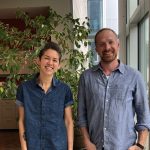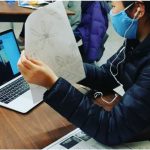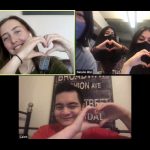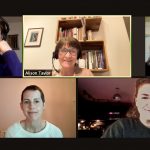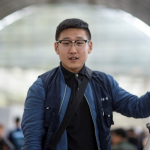Written by: Katie Forman, Student Learning Coordinator, UBC Learning Exchange, May 2019
The UBC Learning Exchange is a place for community-university engagement located in Vancouver’s Downtown Eastside. Since 1999 the Learning Exchange has provided free programming for community members, offered a wide variety of educational experiences for students, and brokered relationships between the

University community and the people and organizations of the Downtown Eastside. Through this work we’ve seen how involving University students in community transforms students’ learning while supporting community projects.
Almost all students (95%) involved at the Learning Exchange in the 2016-17 year reported benefiting from their experiences in the community. However these benefits aren’t possible without careful groundwork, including attention to learning objectives, community priorities, orienting students to the community, timing, etc. A good project can run aground if these details aren’t mapped out in advance. Careful consideration usually makes for a great project.
Universities like UBC are broad and diverse places, and cookie cutter approaches to community engagement don’t work—rather, some forms involve hourly requirements, reporting expectations, structured reflection activities, or learning outcomes supported in varying degrees by University programs and community partners. Other students want to volunteer in community organizations with no institutional strings attached but still need to balance course schedules, jobs, commutes from campus, and other commitments. Add on top of this a community like the Downtown Eastside where organizations and programs have their own requirements, restrictions, and schedules and it may seem an impossible journey to connect these different worlds. But it’s worth it!
Being a part of UBC, we at the Learning Exchange have the privilege of an insider view. We are part of the same institution as most of the students we work with, share some of the same goals and structures, we can “speak the language” of the University. We know when semesters start and end, we understand that there’s a different pace and rhythm in the summer semester versus the fall, we know that students will have a learning curve in their placements before they start to “get it”. However for many community partners, these realities are invisible, and are secondary to the complexity of their own community work.
Having been a part of the Downtown Eastside for the past 20 years we also know that organizations and programs in this neighbourhood can have equally complicated structures including rules and regulations for community members, staff, and volunteers; preferred nomenclature; safety procedures; scheduling constraints; and more. Depending on their target population and the community organization’s programming, their situations can vary widely and are worth exploring before embarking on a community placement for students. Not just because they might change the course of the placement or prevent the journey entirely, but also because they could lead to unexpected gems for student learning.
In my next post I explore one community experience for students where the logistics of the students’ program and the logistics of the community program we placed them in made for a great experience for all.


